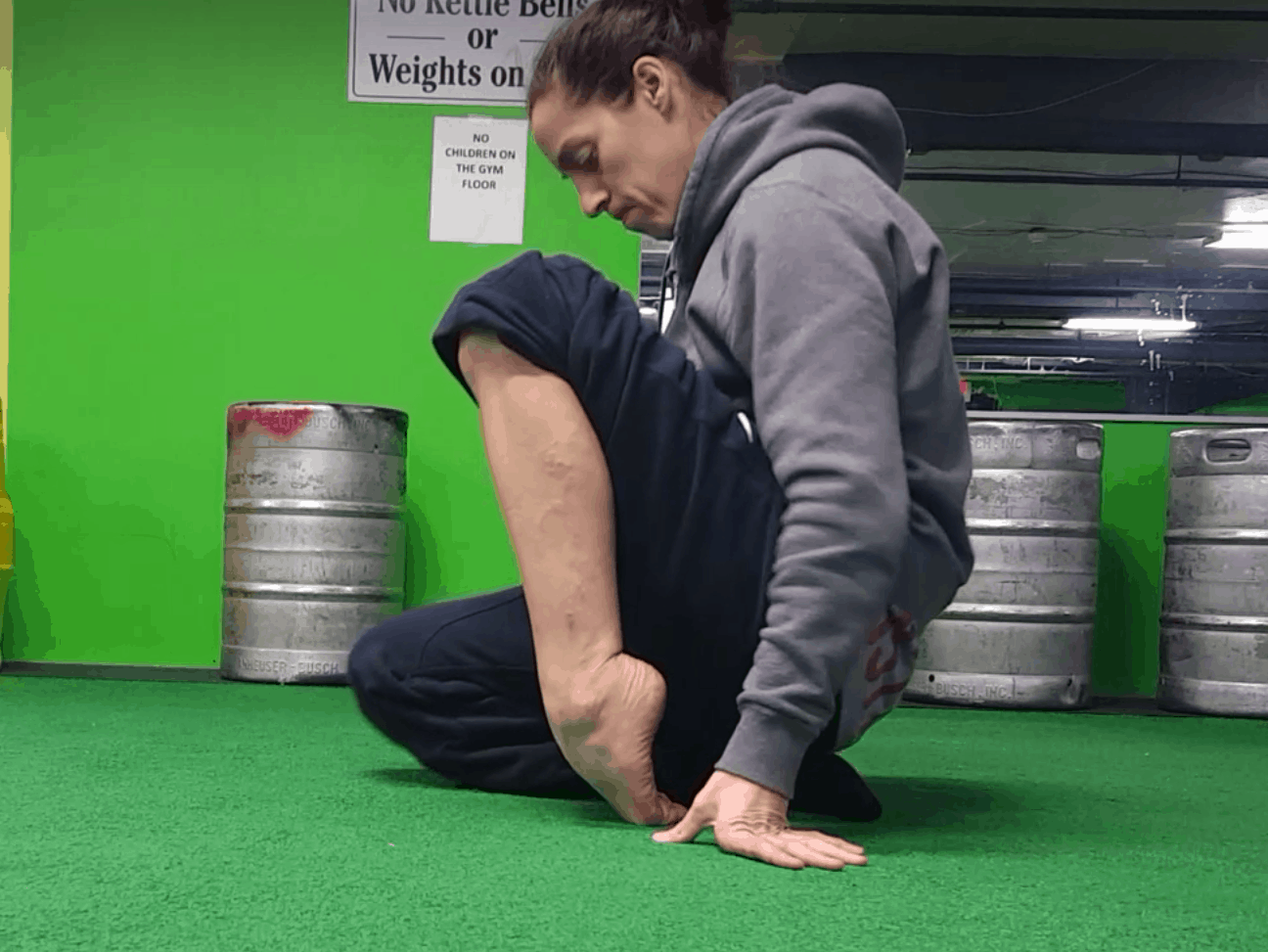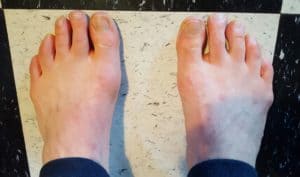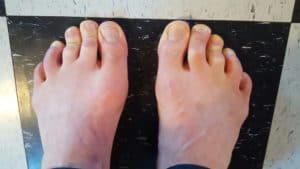
Plantar flexion and the Low Sit
This post serves as a companion piece to Pain Exploration: Medial Knee. It picks up right where it left off, with manipulations of the ankle, foot, and toes.
A low sit with the heel up and toes extended (an expression of dorsiflexion) no longer bothers me. All five digits on both feet absorb load well. Low sitting on top of the foot, though, can still cause discomfort. Plantar flexion and flexed toes, then, became points of focus, and ultimately, it seems, points of resolution.
First, I’ve found that the ability to plantar flex does not translate well to being able to bear weight through plantar flexion. My left side actually has more range of motion in this realm than the right, but the left is the one that exhibits pain in the low sit. Tissues that are compressed display passive mobility. The same dangers that apply to loading flexible end ranges apply here.
EXPLORATION 1: Find ways to safely and effectively load plantar flexion.
The low sit with a collapsed heel is loaded plantar flexion. Here were two options that worked for me:
Pivot points became the toes, sides, and top of foot.
Pressure is placed and kept on the top of the foot. Heel prefers to roll out so I forced it in. The back knee doesn’t bear much load until the hips sink with the shin on the floor. Not coincidentally, the toes hover off the ground at the same time.
Second, the big toe might not be the main attraction. Foot shape and toe length best determine the main instigators of problems along that anterior line.
EXPLORATION 2: Identify which toe(s) is the actual culprit.
My second toe is the longest and reaches the furthest out. Leverage wise, it provides the most appropriate linear fulcrum. It’s the foreman for my foot. I have to turn the feet slightly to make the big toe the boss. Also, when I wake up in the morning my big toe avoids almost all contact with the ground. It can’t be El Jefe if it prefers to be light and float.
As I grip, the third toe has the greatest engagement. It bends and holds tension in a way unlike the others.
The tendons under the foot that flex the second and third toe are likely a little tighter, which might explain why loading those two through the top of the foot and in conjunction with plantar flexion, I get a pretty intense stretch that makes me wince while using them as a pivot:
Plantar flexion is made easier after a round of dorsiflexion. When struggling for clean motion, look toward working the opposite.
Third, swivels serve a means of loaded rotations. It places force against a surface in the desired direction over a controllable range of motion.
EXPLORATION 3: Use swivels to assess areas of weakness under load
Most of my weight is carried in my three supportive limbs. Since internal rotation was the most difficult to find comfort in, I added some contradictory additional hip internal rotation from the supportive leg to stress the tissues just a bit more. It acts as a prequel to the added stress of greater load.
Though the knee is the output signal of discomfort, the ankle, foot and toes are the input. This final swivel sequence goes after the source of the problem, and both my knees and hips felt fantastic afterward:
Similar to the bench support ‘push up’ ankle mobilizer, this allows for load to be placed into the feet with knees and hips flexed — a similar position to the low sit.
A final progression putting everything together:
Happy to report that everything shown here was irritation free. We’ll see what tomorrow brings.
Should any piece evoke pain, manipulate load and placement of the foot to clear out causation from the ankle down. You could also try taking the foot out of hip mobility to see just how far its influence goes.





